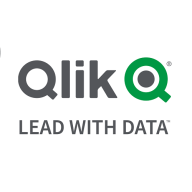

Find out in this report how the two Data Replication solutions compare in terms of features, pricing, service and support, easy of deployment, and ROI.

JumpMind SymmetricDS is a powerful data replication software that provides synchronization software solutions for both databases and filesystems. This software is platform-independent and web-enabled as well as database agnostic. JumpMind SymmetricDS creates prompt bi-directional data replication while scaling to a large amount of nodes and working in close to real time across both WAN and LAN networks. This allows companies to integrate data using the feature for continuous change data capture.
This data replication software allows companies with limited network bandwidth or bad connectivity to benefit from excellent cloud conditions. The greatest benefit of JumpMind SymmetricDS is its vast integration across databases, streaming platforms, and data warehouses. Some of the relational databases where this data replication software can be used include Oracle, PostgreSQL, MySQL, Sybase, Informix, Ingres, Tiber, and VoltDB. NoSQL databases like MongoDB, Apache Cassandra, and Azure Cosmos are also compatible with the JumpMind SymmetricDS data replication software. The data warehouses that are compatible with this software include Teradata, SAP HANA, Azure-SQL server by Microsoft, BigQuery, Amazon Redshift, Pivotal Greenplum, and Snowflake data warehouse. Providing coverage of so many databases and warehouses allows broad outreach of the JumpMind SymmetricDS across many different companies and users.
JumpMind SymmetricDS offers many valuable features, including:
Other features include tools for conflict detection and resolution, embedding and extending, filtering, subsetting, and transforming.
The benefits of using JumpMind SymmetricDS include:
According to the CEO at a non-profit, JumpMind SymmetricsDS is fully featured and is also very easy to use and install. He finds it to be self-explanatory to use and says that their support is very good.
Qlik Sense is a powerful business intelligence tool that offers a range of features to help organizations make faster and more informed decisions. Its primary use cases include operational and financial dashboards, self-service reporting, and centralized access to cross-functional reports. The solution is praised for its mobile platform, ease of use, data-sharing capabilities, and extensibility.
Qlik Sense has helped organizations improve data literacy, reduce time consumed in complex reports, and provide widely available MI to senior stakeholders. It also enables self-service analytics, improves data quality and governance, enhances collaboration, and reduces costs.
We monitor all Data Replication reviews to prevent fraudulent reviews and keep review quality high. We do not post reviews by company employees or direct competitors. We validate each review for authenticity via cross-reference with LinkedIn, and personal follow-up with the reviewer when necessary.